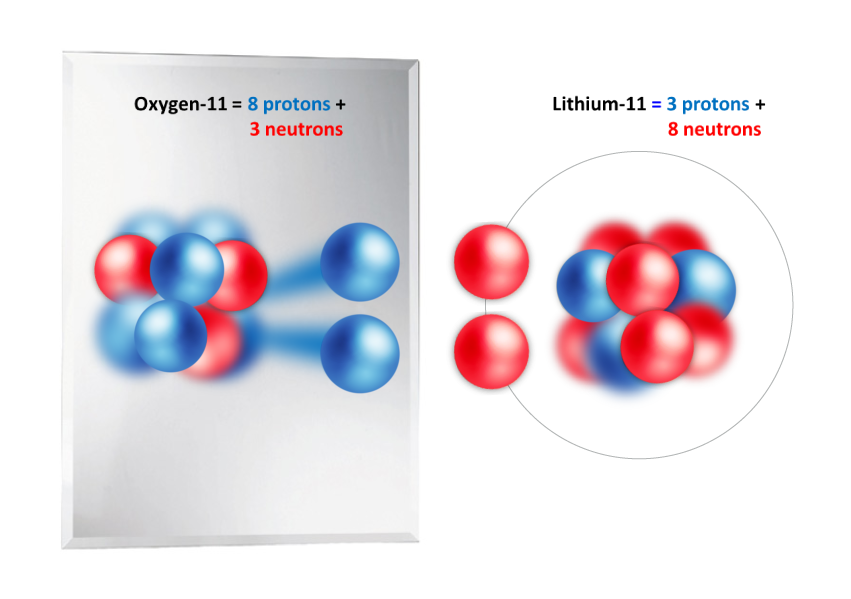First Observation of Unbound 11O, the Mirror of the Halo Nucleus 11Li
Featherweight Oxygen Discovered and Explained
Oxygen is the single most vital elements for biological processes occurring in all forms of life from plants to humans. The recent study, published in Phys. Rev. Lett., led by the group from Washington University, St. Louis, reported the discovery of the lightest oxygen isotope yet, oxygen-11, one with only 3 neutrons to complement the 8 protons. The experiment was performed at the National Superconducting Cyclotron Laboratory at Michigan State University using one- and two- neutron knockout reactions with an oxygen-13 beam. The data obtained in this experiment allow for a comparison of two nuclei that are neutron-proton mirror partners. The invariant-mass spectrum of the 2p+9C decay products measured with the HiRA detector contained a single broad peak with a width of 3.4 MeV.
The mate of oxygen-11 is lithium-11, a well-studied nucleus with an extremely large neutron-to-proton ratio. Lithium-11 is known to be unusually large and have a halo composed of two very-loosely-bound neutrons with known orbital properties. Looking at the image of lithium-11 in a neutron-to-proton inverting mirror allows for a stringent test of the symmetry of the nuclear force with respect to neutron-proton exchange. In order to explain the observed data, theoretical analysis was carried out with the Gamow coupled-channel approach by Research Associate Simin Wang, which suggests that the observed peak is most likely a multiplet. The calculations demonstrate the importance of the coupling to the continuum for states beyond the drip lines and the role that near-threshold resonant states with zero angular momentum can play in constructing the many-body wave functions. The calculations also indicate that the wave functions of two nuclei are indeed nearly mirrored. In this case, this means that the orbital motions of the weakly-bound particles (be they neutrons in lithium-11 or protons in oxygen-11) are similar. It does not need to be this way as oxygen-11 is unbound while lithium-11 is marginally bound.
Read more here: The Source




